Small to medium diameter eucalypt milling, Woodmizer
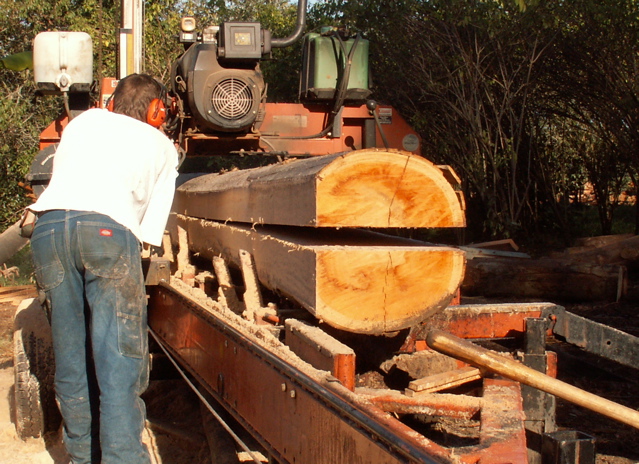
The log is positioned on the bed and the small end is raised until the pith is level. This can be achieved by measuring up from the bed at each end.
The first cut is exactly parallel to the pith and is to provide a stable base for the third cut.
The log is then turned 90º with the first cut presented against the fence exactly vertical.
The second cut is through the pith and releases stress as curve on both faces.
The top half will thus rock on a central pivot. To make it easy to turn the two halves together, one end of the top half is lifted just a fraction (using a spade) and a fillet is inserted. The halves now have two points of contact.
Keeping the two halves intact, the log is turned 90º so the two halves rest on the bed from the faces produced in the first cut.
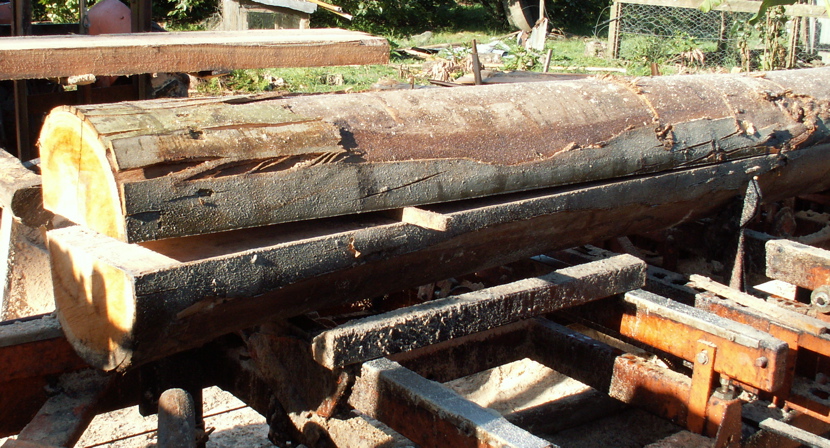
A batten is placed in the gap...
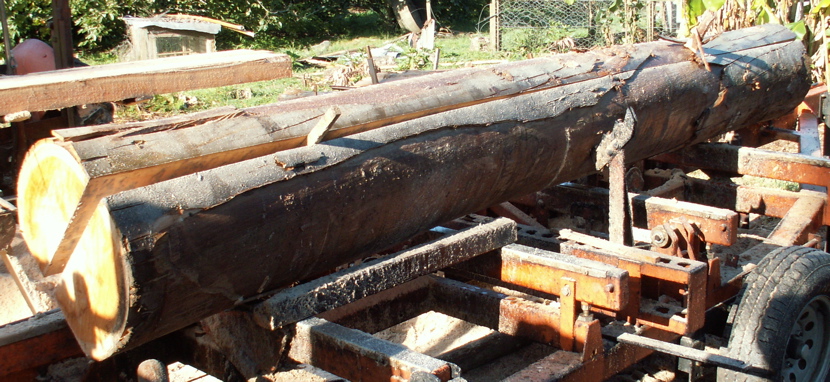
...and the log is turned 90º
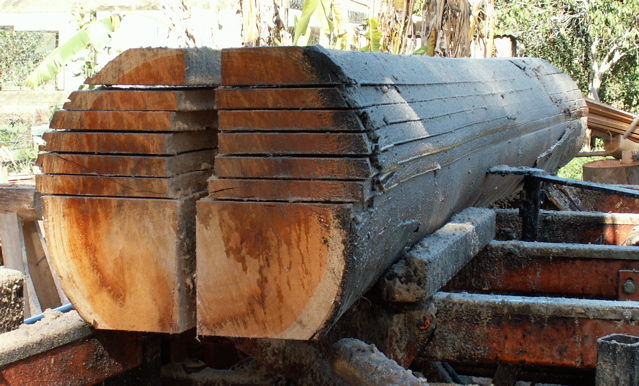
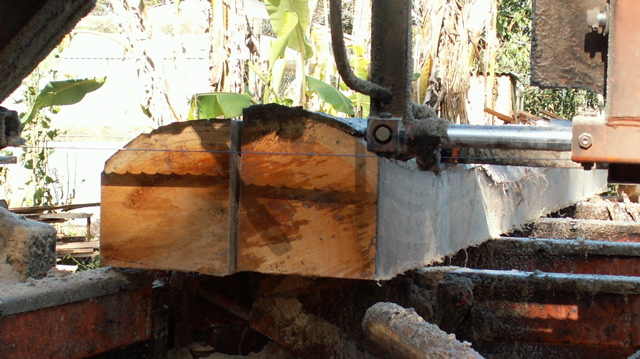
The log is clamped and then slabbed. The faces are sawn and two slabs are produced from each cut. The tension is released and the edges are sawn later.
The very first slabbing cut needs to be deep enough to be able to recut a 56x56 board from both slabs (keeping in mind the middle section of the slab is narrower than the ends). With experience the sawyer will make the cut right. If the cut is too shallow it needs to be repeated a bit deeper.
In this example the first two opposing slabs are sawn at 56mm to minimise waste. These first slabs will be edged to 56mm x 56mm for a laminating product. With larger logs the sawyer might choose to produce two 28mm slabs from the first cuts to minimise waste, which will result in two 83mm x 28mm flatsawn boards. The rest of the slabs will result in progressively wider and more quartersawn boards.
Once about half way through the log the sawyer can remove the slabs and turn the two quarters before slabbing these in the same way. The cuts are indexed from the bottom this time so that the last slabs left on the bench are 28mm. The bottom face straightens out as the slabs are sawn from the quarters and these last slabs should be dimensioned for thickness.
The slabs are either edged with a woodmizer twin blade edger or sorted into piles according to width and returned to the bench in groups for edging.
Eucalypt logs of 30cm SED and greater produce green recoveries of greater than 50%. For heart-only recovery from species such as E. saligna which are subject to brittleheart, logs of greater than 40cm are required.
Disclaimer: While every effort is made to ensure the accuracy of the information provided on this site, Farm Forestry Timbers Society do not accept liability for any consequences arising from reliance on the information published. If readers have any doubts about acting on any articles they should seek confirming, professional advice.
 Farm Forestry New Zealand
Farm Forestry New Zealand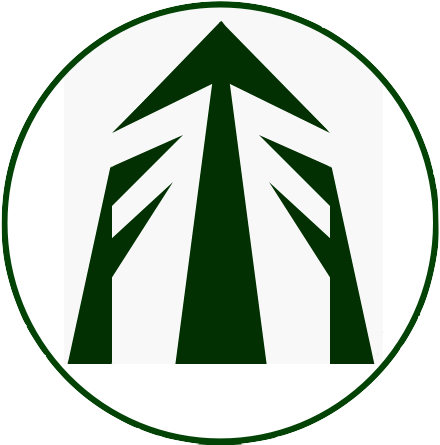 Farm Forestry Timbers - Headlines
Farm Forestry Timbers - Headlines